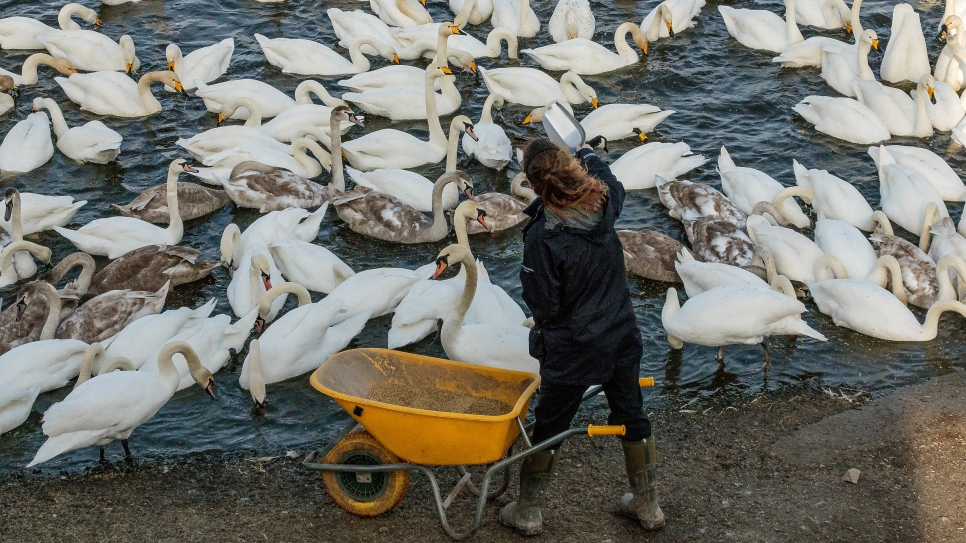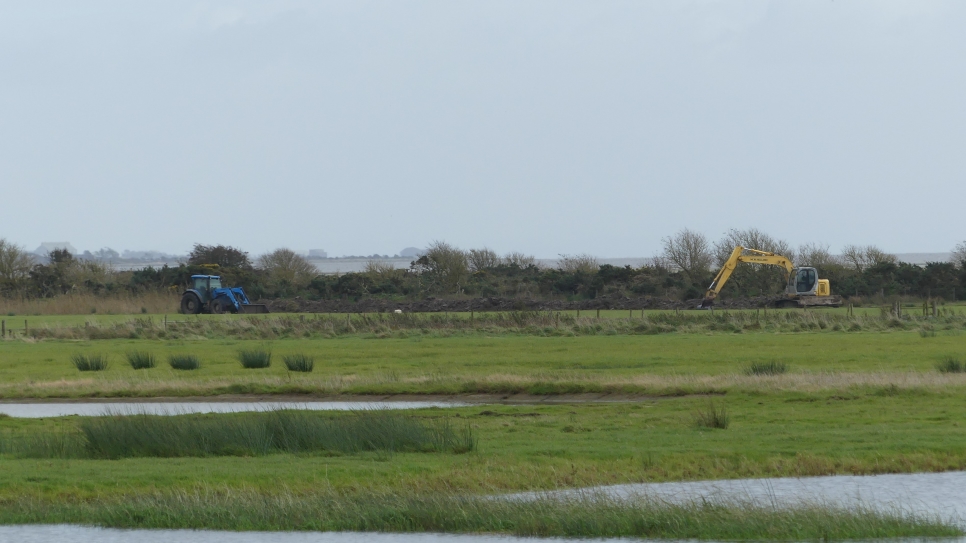Why are the plants so salty? There's too much sea-soning!
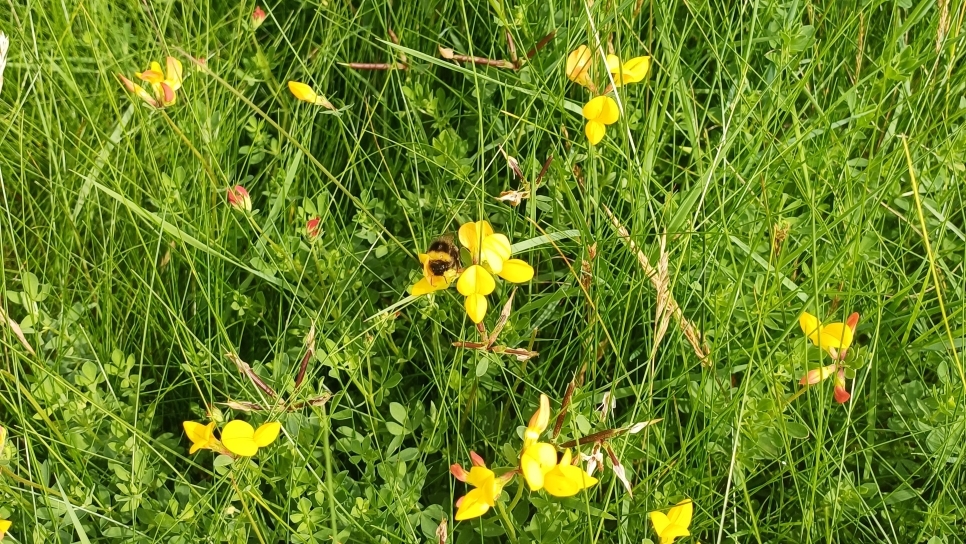
Last week we welcomed botanist Chris Miles to give us some saltmarsh plant ID training. Working at WWT Caerlaverock, no day is the same and this was an exciting opportunity to learn something new.
We headed out onto the merse starting behind the Saltcot Merse Observatory to the first zone, the landward edge, where the transition from freshwater begins. This area is grazed by cattle during the summer to promote biodiversity. If we didn’t graze the saltmarsh, grass would outcompete species such as thrift, birdsfoot trefoil, and tufted vetch. Grazing is monitored carefully to strike the right balance, and the cattle are a great addition to our habitat management – without them it would be difficult to manage vegetation on the saltmarsh. The tide only reaches this zone during particularly high tides, for example the winter spring tides. In this zone we saw species such as brackish water-crowfoot in the ponds, celery leaved buttercup, and creeping bent, which exhibit some salt tolerance.
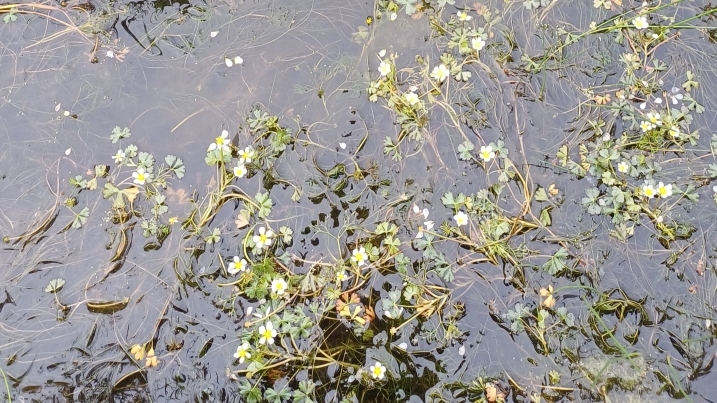 Brackish water-crowfoot.
Brackish water-crowfoot.
Next, we passed the fence beyond where the cattle graze and there was a stark contrast in the grass – it was thick and high. We saw an increase in flowers and the dominant grasses thrived. It is important to note that although we saw more flowers, this is not a representation of biodiversity. We saw flowers as they had not been grazed but the range of species is smaller. In the grazed areas, the plants are present but often the flowers have been eaten! During the winter this zone is reached by tides occasionally. Species present included parsley water dropwort, red fescue, and autumn hawkbit.
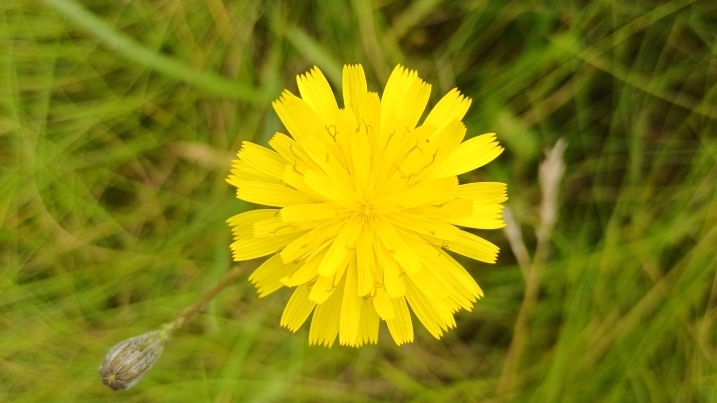 Autumn hawkbit.
Autumn hawkbit.
As we ventured further out into the lower marsh, an area covered by tides regularly, we treaded carefully, avoiding creeks and holes hidden by the vegetation. With the change in land, we began to see a shift in the kind of plant species. To survive here, the plants including sea aster, annual sea-blite, and sea arrow grass must maintain a high tolerance to salty conditions.
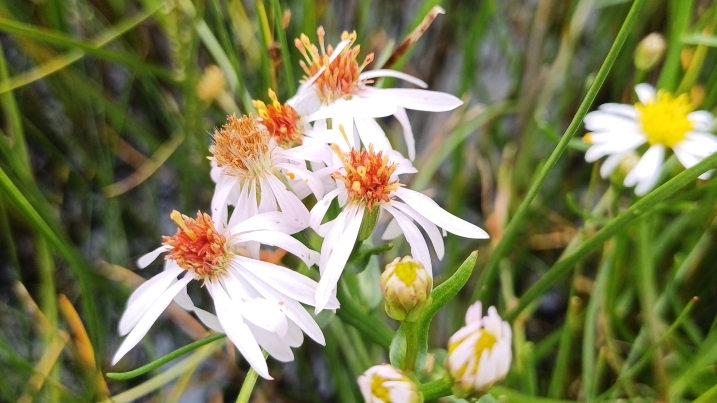 Sea aster.
Sea aster.
As we approached the seaward edge and mudflats, the pioneer saltmarsh, the ground became increasingly bare and dominated by early successional plants. This area is inundated by the tide twice daily therefore the plants must exhibit a very high tolerance to salinity. Plants in this zone included common saltmarsh grass, glasswort (also known as samphire), and common cordgrass.
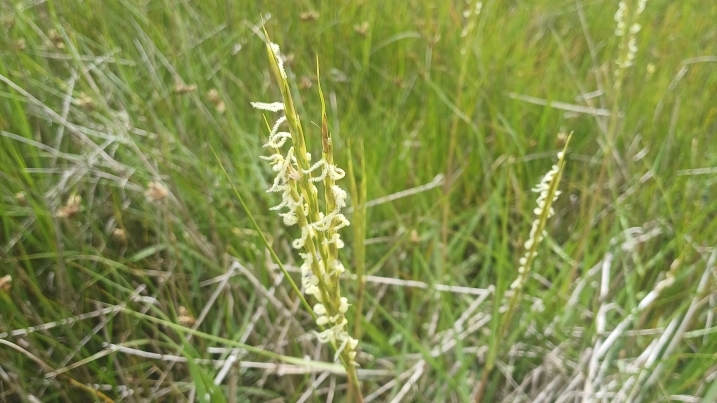 Common cordgrass.
Common cordgrass.
It is important for us to understand the flora of the saltmarsh. These species are a vital source of food for the wintering wildfowl that visit the reserve. It also allows us to monitor species, reinforce the importance of saltmarsh conservation, and to understand the reserve and land that we work to protect.
Words and pictures by Saoirse Murphy-Collot. Cover image: birdsfoot trefoil.

